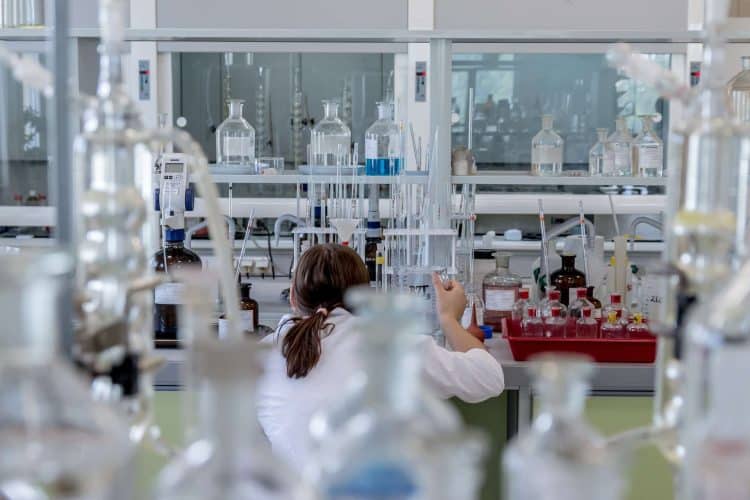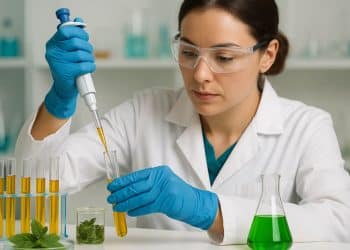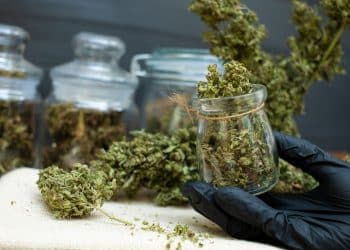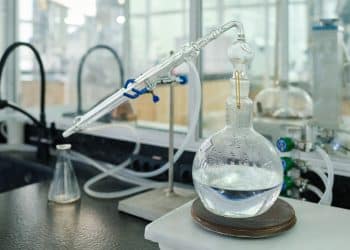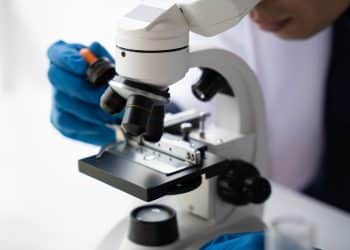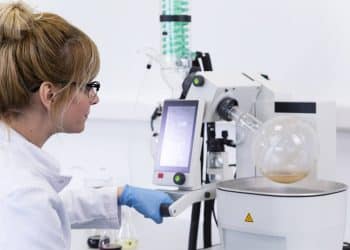A recent research paper published in Separations investigates the effect of solvent selection and decarboxylation on the composition and pharmacological activity of cannabis extracts. [1] Whole-plant cannabis extraction is thought to have a preferable pharmaceutical composition because it harnesses the benefits of major cannabinoids, minor cannabinoids, and terpenes. These cannabis compounds are thought to work best together via the entourage or ensemble effect.
To evaluate the effect of solvent selection and decarboxylation on cannabis extracts, 40 extracts from 10 different cannabis cultivars were generated. Either ethanol or hexane were used as extraction solvents (see method below). The crude cannabis extract was then either decarboxylated or left un-decarboxylated. The study notes, “…solvent selection and proper decarboxylation represent key aspects of the standardized production of cannabis extracts with reproducible pharmacological activity.”
Percolation of plant material with an organic solvent creates a primary, or “crude” extract. Direct crystallization and recrystallization in the same solvent can then yield purified cannabinoids, such as cannabidiol (CBD), cannabigerol (CBG), and cannabigerolic acid (CBGA). Liquid-liquid chromatography can also be used to isolate cannabinoids, including delta-9-tetrahydrocannabinol (THC), tetrahydrocannabinolic acid (THCA), tetrahydrocannabivarin (THCV), cannabidiolic acid (CBDA), cannabidivarin (CBDV), and cannabigerovarin (CBGV).
Cannabinoids are non-polar but soluble in polar (e.g., ethanol) and non-polar (e.g., hexane) solvents. However, the yield of extracted terpenes and other plant compounds can differ based on the solvent used. Polar solvents are more likely to extract flavonoids and polyphenols, which are polar molecules. Terpenes are non-polar though, so a polar solvent is less likely to extract them efficiently. Decarboxylation influences the activity of cannabis molecules (i.e., phytocannabinoids) at receptor sites in the body and impacts pharmaceutical properties.
The researchers conducted the following experiment:
Crude Extraction Solvents: n-hexane and absolute ethanol
Crystallization Solvents: Petroleum ether bp at 40-60 ºC or n-hexane (CBD, CBG and CBGA)
Liquid-Liquid Chromatography Solvents: Purified water in addition to the n-hexane and absolute ethanol (THC, THCA, CBDA, CBDV, and CBGV)
Cannabinoid Extraction Procedure: In an orbital shaker (190 rpm), 100g cannabis material and organic solvent were stirred at room temperature then vacuum filtered (pore size 16-40 µm). The extracts were placed in a rotary evaporator (40°C hexane and 50°C ethanol) and were evaporated to dryness. Dry extracts were decarboxylated by incubating in a drying oven at 150°C for 60 min (converting cannabinoid acids into neutral forms).
Cannabinoid Purification Procedure: The n-hexane extracts of petroleum ether extracts were purified by direct crystallization and three recrystallizations in the same solvent (CBD, CBG, CBGA). This was done in a 1L reactor with a 1L jacketed filter chilled to -18°C or 4°C and filtered under vacuum. Liquid-liquid chromatography was performed with CPC-1000-PRO and PLC 250 systems (THC, THCA, CBDA, CBDV, and CBGV).
The research team tested the extracts from their experimental extraction process for cannabinoid content and screened their biological activity against molecules involved in hypoxia and inflammation (NF-κB, HIF-1α and STAT3). The cannabinoid content did not differ significantly based on solvent. However, the findings of the biological activity screening observed that the decarboxylated hexane-extracted cannabis concentrate potently inhibited NF-κB transcription. Ethanol-extracted cannabis concentrate (decarboxylated and non-decarboxylated) provided the strongest inhibition of HIF-1α.
The relevant benefits of each extract may therefore relate not solely to cannabinoid content, but to the presence of additional molecules (e.g., flavonoids). This was confirmed due to the “differential pharmacological properties” between isolated cannabinoids and crude extracts.
Nonetheless, decarboxylated extracts performed best at STAT3 induction regardless of solvent, pointing to the power of neutral cannabinoids.
The researchers conclude, “The composition and pharmacological activity of different cannabis extracts obtain [sic] from a single cultivar differed largely depending on the organic solvent used and the subsequent decarboxylation process.” [1]
References
- Moreno-Sanz G, Ferreiro Vera C, Sánchez-Carnerero C, Nadal Roura X, Sánchez de Medina Baena V. Biological activity of Cannabis sativa extracts critically depends on solvent polarity and decarboxylation. Separations. 2020;7(4):56. doi:10.3390/separations7040056. [Impact Factor: 2.777; Times Cited: n/a]
Image: Michal Jarmoluk from Pixabay
